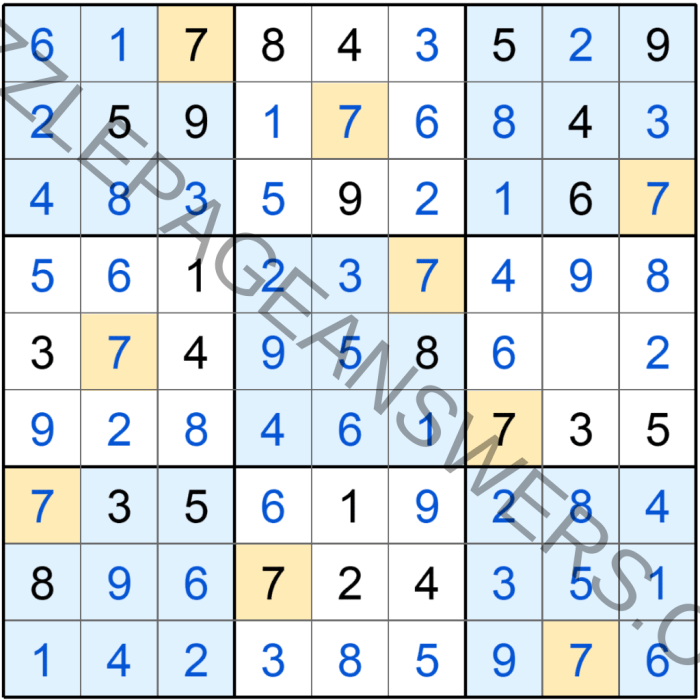Man made fiber crossword clue – Embarking on a journey into the realm of man-made fiber crossword clues, we unravel the enigmatic world of synthetic materials that have revolutionized various industries. From their humble beginnings to their multifaceted applications, these man-made marvels have left an indelible mark on our lives.
As we delve deeper into the intricacies of man-made fibers, we’ll explore their diverse types, manufacturing processes, and the myriad sectors they’ve transformed. Along the way, we’ll uncover their unique properties, advantages, and challenges, shedding light on the remarkable versatility of these synthetic wonders.
History of Man-Made Fibers

The history of man-made fibers began in the late 19th century with the development of artificial silk, known as rayon. This was followed by the creation of nylon in the 1930s, which revolutionized the textile industry. In the decades that followed, other man-made fibers such as polyester, acrylic, and spandex were developed, each with its own unique properties and applications.
Key Figures and Companies
Many key figures and companies have played a role in the development of man-made fibers. Among them are:
-
-*Charles Frederick Cross and Edward John Bevan
British chemists who developed the first artificial silk in 1891.
-*Wallace Hume Carothers
American chemist who invented nylon in 1935.
-*John Whinfield and James Dickson
British chemists who developed polyester in 1941.
-*E.I. du Pont de Nemours and Company
American chemical company that played a major role in the development and production of man-made fibers.
-*Imperial Chemical Industries (ICI)
British chemical company that also played a major role in the development and production of man-made fibers.
Types of Man-Made Fibers: Man Made Fiber Crossword Clue

Man-made fibers are classified into two main categories based on their composition:
Synthetic Fibers:These fibers are created from chemical compounds that do not occur naturally. Examples include nylon, polyester, and acrylic.
Man-made fibers are synthetic materials that are not found in nature. They are typically made from petroleum or cellulose. What polarity is tig welding ? Tig welding uses a tungsten electrode and an inert gas to create a weld. The polarity of the electrode determines the direction of the current flow.
Man-made fibers are often used in clothing and other textiles.
Regenerated Fibers:These fibers are derived from natural materials but undergo chemical processing to enhance their properties. Examples include rayon, modal, and lyocell.
Advantages and Disadvantages of Man-Made Fibers
Man-made fibers offer several advantages over natural fibers, including:
- Enhanced durability and strength
- Resistance to wrinkling and shrinking
- Variety of textures and colors
- Lower production costs
However, man-made fibers also have some disadvantages:
- Less breathable than natural fibers
- Can be prone to static electricity
- May not be as biodegradable as natural fibers
Specific Types of Man-Made Fibers
Nylon:A synthetic fiber known for its strength, elasticity, and resistance to abrasion. It is commonly used in clothing, carpets, and ropes. Polyester:A synthetic fiber that is wrinkle-resistant, moisture-wicking, and durable. It is often used in sportswear, bedding, and upholstery. Acrylic:A synthetic fiber that resembles wool in texture and warmth.
It is often used in sweaters, blankets, and carpets. Rayon:A regenerated fiber made from cellulose. It is soft, breathable, and drapes well. It is commonly used in clothing, curtains, and bed sheets. Modal:A regenerated fiber made from beech trees.
It is softer, more breathable, and more moisture-absorbent than rayon. It is often used in high-quality clothing and bedding. Lyocell:A regenerated fiber made from eucalyptus trees. It is similar to modal but has a higher strength and wrinkle resistance. It is often used in clothing, bedding, and towels.
Manufacturing Process of Man-Made Fibers

The manufacturing process of man-made fibers involves several steps, starting with the selection of raw materials and ending with the production of the final fiber. The raw materials used in the production of man-made fibers can be either natural or synthetic.
Natural raw materials include cellulose from wood pulp or cotton, while synthetic raw materials include petrochemicals.
The chemical reactions that take place during the manufacturing process depend on the type of fiber being produced. For example, in the production of nylon, a polyamide fiber, a reaction takes place between adipic acid and hexamethylene diamine. In the production of polyester, a polyester fiber, a reaction takes place between terephthalic acid and ethylene glycol.
The manufacturing process of man-made fibers can have a significant environmental impact. The production of synthetic fibers, in particular, can release harmful chemicals into the environment. However, there are a number of ways to reduce the environmental impact of the manufacturing process, such as using recycled materials and using more energy-efficient processes.
Applications of Man-Made Fibers
Man-made fibers have revolutionized various industries due to their exceptional properties and versatility. They are widely used in a multitude of products, ranging from clothing and home furnishings to medical devices and industrial applications.
Consumer Products
In the consumer products sector, man-made fibers are extensively employed in the production of clothing, bedding, carpets, and upholstery. Synthetic fibers like nylon, polyester, and acrylic are known for their durability, wrinkle resistance, and moisture-wicking properties, making them ideal for activewear, sportswear, and outdoor gear.
Medical Applications
Man-made fibers play a crucial role in the medical field. Surgical sutures, bandages, and artificial organs often incorporate synthetic fibers due to their biocompatibility, strength, and resistance to infection. Additionally, man-made fibers are used in wound dressings and implants, providing enhanced healing and tissue regeneration.
Industrial Applications
In the industrial sector, man-made fibers are utilized in a wide range of applications. They are used in the production of ropes, nets, filters, and composites. Carbon fibers, known for their exceptional strength and lightness, are employed in aerospace and automotive components.
Properties of Man-Made Fibers
Man-made fibers possess unique properties that distinguish them from natural fibers. These properties are influenced by their chemical composition and molecular structure, leading to tailored characteristics for specific applications.
Compared to natural fibers, man-made fibers often exhibit higher strength, durability, and resistance to chemicals and abrasion. They can be engineered with specific properties, such as flame resistance, moisture absorption, or elasticity, to meet the demands of various industries.
Chemical Composition and Structure
Man-made fibers are synthesized from chemical compounds, primarily polymers. These polymers consist of long chains of repeating molecular units that determine the fiber’s properties. The arrangement of these units, whether linear, branched, or cross-linked, affects the fiber’s strength, flexibility, and other characteristics.
Specific Properties and Applications
- Strength and Durability:Man-made fibers like nylon and polyester are known for their high strength-to-weight ratio, making them ideal for applications such as ropes, sails, and protective clothing.
- Chemical Resistance:Acrylic and modacrylic fibers are resistant to acids, alkalis, and solvents, making them suitable for use in chemical processing and industrial settings.
- Flame Resistance:Aramid fibers, such as Nomex, are highly flame-resistant and are used in protective clothing for firefighters and industrial workers.
- Moisture Absorption:Rayon and viscose fibers absorb moisture well, making them comfortable to wear and suitable for use in towels and absorbent materials.
- Elasticity:Spandex fibers have exceptional elasticity and are commonly used in sportswear, swimwear, and elastic bands.
Future Trends in Man-Made Fibers
The future of man-made fibers holds promising advancements in technology, applications, and sustainability.
Emerging technologies like nanotechnology and biotechnology are enabling the development of fibers with enhanced properties and functionalities. These fibers can possess unique characteristics such as antimicrobial, self-cleaning, and energy-harvesting capabilities.
Potential New Applications and Markets
Man-made fibers are poised to expand into new applications and markets. They are gaining traction in sectors such as healthcare, electronics, and construction due to their tailored properties and versatility.
- In healthcare, man-made fibers are being used in wound dressings, surgical sutures, and tissue engineering.
- In electronics, they are employed in flexible displays, sensors, and energy storage devices.
- In construction, they are being utilized in lightweight and durable building materials, such as composites and geotextiles.
Sustainability Challenges and Opportunities, Man made fiber crossword clue
While man-made fibers offer numerous advantages, they also present sustainability challenges. The production of these fibers often involves the use of non-renewable resources and can generate waste and emissions.
- Research and development are focused on developing more sustainable production methods, such as using renewable resources and biodegradable materials.
- Recycling and upcycling initiatives are being implemented to reduce the environmental impact of man-made fibers.
By addressing these challenges and leveraging emerging technologies, the future of man-made fibers is expected to witness significant advancements in performance, functionality, and sustainability.
Frequently Asked Questions
What are the advantages of man-made fibers?
Man-made fibers offer several advantages over natural fibers, including enhanced durability, wrinkle resistance, moisture wicking, and resistance to fading and shrinking.
How are man-made fibers manufactured?
Man-made fibers are produced through a variety of chemical processes that transform raw materials like cellulose, petroleum, or natural gas into synthetic polymers, which are then extruded into fibers.
What are the different types of man-made fibers?
Man-made fibers are classified into two main categories: cellulosic fibers (e.g., rayon, acetate) and synthetic fibers (e.g., nylon, polyester, spandex).